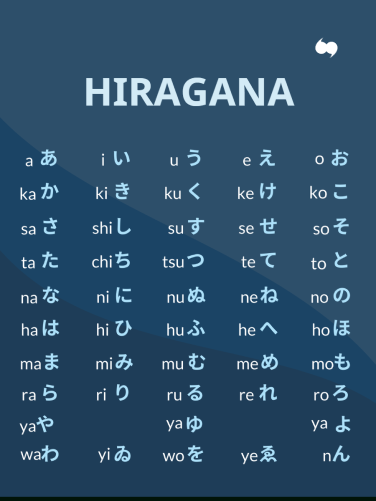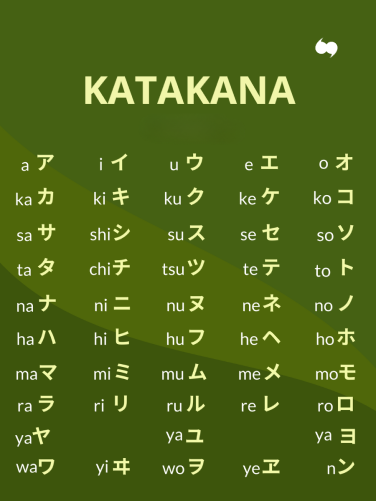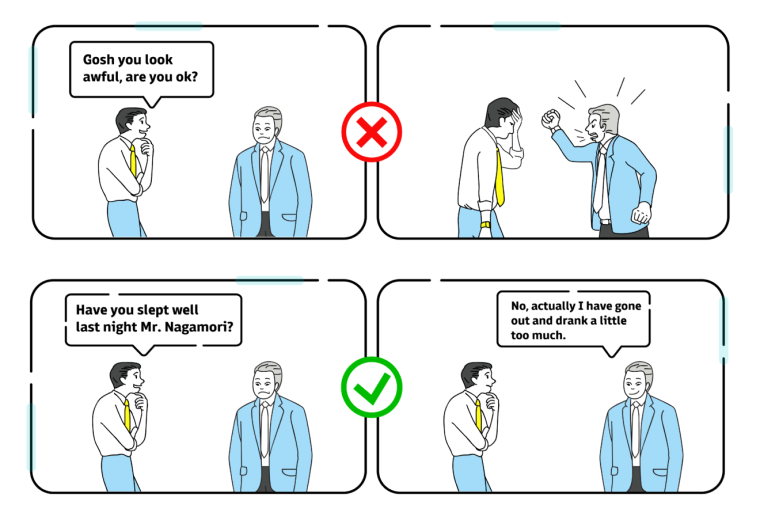Why is Japanese to English Translation so Challenging?
-
 AUTHOR Jennie Tran
AUTHOR Jennie Tran - PUBLISHED ON: 3월 23, 2023
- PUBLISHED IN: Translation

Japanese is ranked as the ninth most spoken language globally, with approximately 130 million speakers worldwide. However, it is also known as one of the most challenging languages to translate, especially when it comes to translating from Japanese to English. The process of translating from Japanese to English requires a deep understanding of not only the language but also the cultural nuances that often influence the meaning of words and phrases. It is no wonder why Japanese to English translation is known to be so hard. In this blog, Mobico will explore the difficulties translators encounter when translating Japanese to English.
The Japanese Alphabet
Japanese and English have vastly different origins. This makes it challenging to translate Japanese to English because direct word-for-word translations often do not exist, and the two languages use entirely different alphabets.
Unlike English, Japanese alphabet is unique in that it has three writing systems: Hiragana, Katakana, and Kanji, each of which has a specific purpose.
- Hiragana is used for native Japanese words, including particles, names of places and people, and so on. Hiragana and Katakana consist of 46 symbols each and represent every sound in the Japanese language.
- Katakana is primarily utilized to represent the phonetic sounds of foreign words and Japanese words that originate from foreign languages. As a result, loanwords, particularly those from Europe and America, which are referred to as “外来語” (gairaigo) in Japanese, meaning “language from the outside,” are transcribed using Katakana.
- Kanji, Chinese characters, are used to represent words, ideas, and concepts. Its characters are ideograms that are complex graphic symbols that derive meaning from various factors, such as the different strokes, their placement within a character, and different ways of interpretation. However, the meaning of a Kanji character can change depending on the context in which it is used. For example, the Kanji for “shin” can mean “heart,” “mind,” or “spirit,” depending on the context in which it is used.
Today Japanese is a mixture of Hiragana, Katakana, and Kanji. It is common for Japanese writers to use a combination of Kanji and Hiragana to form a single word. Besides, the Japanese writing system includes thousands of Kanji characters, making it a significant challenge for translators to accurately interpret and translate written Japanese content to English.


Grammatical Discrepancy
1. SOV instead of SVO
Japanese grammar is very different from English, with a different sentence structure and different rules for verb conjugation. Japanese sentences are often structured in the reverse order of English sentences, with the verb coming at the end. This can make it difficult to convey the intended meaning in a way that sounds natural in English.
In English, the typical sentence structure is subject-verb-object, while in Japanese language, the structure is subject-object-verb. This means that when translating from Japanese to English, the translator must comprehend the entire sentence before rearranging the word order to conform to English sentence structure.
Example:
English: “Mary likes bananas.”
Japanese: “メアリーはバナナが好きです” (Meari wa banana ga sukidesu), the word order is “Mary banana like”.
2. No plural nouns
Japanese language does not distinguish between singular and plural nouns and uses different counting methods for adjectives and pronouns. If a Japanese sentence is translated literally into English, it may not be evident how many objects are involved or how many people are involved in the sentence.
Example:
English: “I received candies from Andie.”
Japanese: アンディからキャンディーをもらいました。(Andi kara kyandī o moraimashita) which means “Andie from candy received”. We can’t be certain who received the sweets or how many sweets were received without context.
3. Lacks definite and indefinite articles
In English, the use of articles such as “the” and “a/an” are essential for conveying meaning and clarity in sentences. However, in Japanese, there is no equivalent to these articles. Instead, Japanese relies on context, particles, and sentence structure to convey the same information.
Japanese nouns do not have grammatical gender or number, so there is no need for articles to indicate these distinctions. Instead, particles such as “は” (wa) and “が” (ga) are used to mark the subject and object of the sentence, respectively.
Example:
English: “I eat an apple”
Japanese: “私はリンゴを食べます” (Watashi wa ringo o tabemasu), the particle “o” marks the object of the sentence, while the lack of an article before “ringo” indicates that it is an indefinite object.
4. No subject
Japanese sentences often omit subjects and are structured differently, making it hard to convey the intended meaning in English.
Example:
English: “I love you.”
Japanese: “愛してます” (Aishitemasu), which is translated as “You love”, or simply “Love”.
5. No future verb tense
In Japanese, unlike many other languages such as English, there is no specific verb tense dedicated to the future. Instead, Japanese relies on context, particles, and auxiliary words to convey future events or actions.
One common way to express the future tense in Japanese Translation is by using the present tense of a verb along with a time-related word or phrase, such as “tomorrow” or “next week.”
Example:
English: “I will go to the store tomorrow”.
Japanese: “明日、私は店に行きます” (Ashita, watashi wa mise ni ikimasu), where “ashita” means “tomorrow” and “ikimasu” is the present tense of the verb “to go”.
Honorifics – Formality
In English, we switch between formal and informal language when communicating with different people, depending on their social status. However, in Japanese society, there are numerous levels of showing respect through language. It has 3 main levels, one informal “くだけた”(kudaketa), one formal “ていねい” (teinei), and one advanced polite form “敬語” (keigo). They use different forms according to the position, age, experience, or status of the person addressed. Japanese also avoid using any negative or contradictory words, which makes Japanese sounds more polite.
For example, in Japanese, you wouldn’t say, “I don’t like this”. You might instead say, “This is not to my taste”. You could say the former, but it might be perceived as rude. Therefore, incorrect use of honorifics can be highly offensive, so it is crucial to employ a professional translator or localization company that can accurately translate English to Japanese.

Cultural Differences
In addition to the challenges of translation, cultural differences can make it difficult to convey the intended meaning accurately. Japanese culture is very different from Western culture, with different values and social norms. For example, the concept of “wa” (和), which refers to harmony and cooperation, is an essential part of Japanese culture. This concept is difficult to translate into English, which places a greater emphasis on individualism and independence.
To overcome these challenges, translators must deeply understand both languages and cultures. They must be able to accurately convey the intended meaning while taking into account the cultural context in which the message is being communicated. This requires not only linguistic skills but also cultural sensitivity and an understanding of the nuances of both languages.
Final Thoughts
It is undeniable that mastering the Japanese language is a daunting task for non-native speakers. Apart from the fact that the language comprises three different writing systems, Japanese is a language that heavily relies on context and respects Japanese culture. In addition to these challenges, Japanese has a distinct sentence structure and grammar that differ significantly from English, making it even more difficult to translate accurately.
If you’re looking to successfully expand your business into the Japanese market, it’s important to recognize the challenges of translation and seek the assistance of an expert translator. At Mobico, we have a wide network of native linguists with expertise in various domains, who can provide top-quality Japanese translation services. Our team offers fast and professional services, and we’re available 24/7 to provide support no matter where you are.





